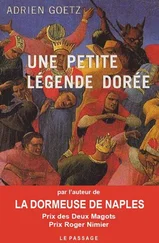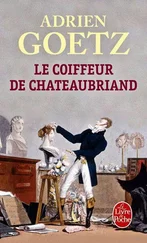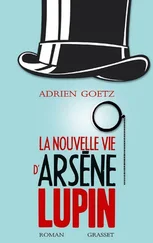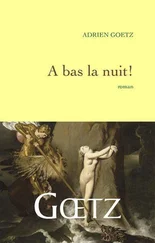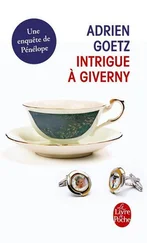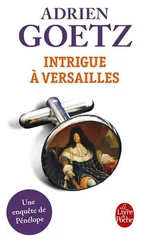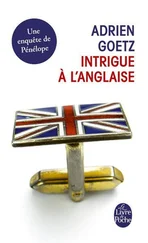Adrien Bosc
Constellation
Sometimes the directions we take in our lives can be decided by the combination of a few words.
— Antonio Tabucchi, The Woman of Porto Pim
AUTHOR’S NOTE TO THE ENGLISH-LANGUAGE EDITION
Pierre Lazareff, editor of France Soir , the great French daily paper of the 1960s, once asked his friend Blaise Cendrars if he had really taken the Trans-Siberian Railway to write his Prose of the Trans-Siberian . The poet’s answer came rocketing back, “What the hell does it matter, as long as I made you take it?” Constellation is unequivocally a novel, a true-life novel to probe the fiction at the heart of our lives, that ever more inventive, surprising, and unexpected reality. In its original and full meaning, the novel is “a fabulous work based on the most singular adventures in the life of man.” (Sade, Reflections on the Novel )
I am the colossal drill
Boring into the startled husk of the night.
— Filippo Tommaso Marinetti, The Pope’s Monoplane
On this night of October 27, 1949, on the apron at Orly, Air France’s F-BAZN is waiting to receive thirty-seven passengers departing for the United States. A year earlier, Marcel Cerdan stepped off the plane as the newly crowned middleweight boxing champion of the world, a title he had clobbered Tony Zale for. And on that October 7, 1948, the crowd lifted him on their shoulders in triumph. A year later, inside the airport with his manager, Jo Longman, and his friend Paul Genser, Cerdan is setting off to regain his title, now in the hands of Jake LaMotta, the Bronx Bull. There is no question that in December, on another Constellation, he will bring the title back with him. In the departure hall at Orly, he blusters to the journalists: “That title’s coming home with me. I’m going to fight like a lion.” Lion against Bull, a matter of signs and constellations. The Lion of Nemea vs. the Minotaur, mythical poster for December 2, 1949, at Madison Square Garden.
Jo Longman is wearing his bad-day face. They’d had to do everything in a hurry, cancel the passage on the ocean liner, claim priority seating on the Paris — New York flight, the whole can of worms, just to meet with Édith Piaf early the next morning. “Bring that title back with you!” says an Air France employee. “That’s the whole idea of going!” says Marcel. “Ye-es,” mutters Jo, who can’t help adding, “If you’d listened to me, we’d have waited a few days. Jesus! We’re sneaking off like thieves, almost. On Tuesday we learned the match was set for December 2, yesterday we were still in the provinces, and today we barely had time to pack our bags. I said we should stay on for a week, attend the meet at the Palais des Sports. But no, that was too simple, and tomorrow you’ll be rampaging around because, no surprise, in the rush to leave you’ll have forgotten half your stuff.” His anger is mock anger, they are used to playing at mutual recrimination, Marcel the amused free spirit and Jo the unheeded professional. In a few minutes, their elbows resting on the Air France bar, they’ll laugh about it. Since the trainer Lucien Roupp quit, Jo has climbed in rank. Always in sunglasses, his hair pomaded, Jo Longman — who founded the Club des Cinq, the cabaret-restaurant where Édith and Marcel met — is the image of the louche character. The boxer likes his gift of gab, his love of partying and head for business, finds him the perfect companion on long trips between Paris, New York, and Casablanca.

The “Airplane of the Stars” is living up to its name today. Besides the “Casablanca Clouter,” the violin virtuoso Ginette Neveu is also setting off to conquer America. The tabloid France-soir organizes an impromptu photo session in the departure lounge. In the first snapshot, Jean Neveu stands in the center smiling at his sister, while Marcel holds the Stradivarius and Ginette grins across at him. Next, Jo takes Jean Neveu’s place and, with his expert’s eye, compares the violinist’s small hands with the boxer’s powerful paws.
Then on the tarmac, at the foot of the gangway, the two celebrities continue their conversation. Ginette gives the details of her tour: Saint Louis, San Francisco, Los Angeles, Chicago, New York. Marcel offers her front-row seats for his rematch at Madison Square Garden and promises to attend the concert at Carnegie Hall on November 30. Maybe they can have dinner together at the Versailles, the cabaret where the Little Sparrow has been packing the house for months.
The four enormous Wright engines of Lockheed Constellation F-BAZN are droning. The propellers and blades have been inspected, and the eleven crew members line up in front of the plane. The big, beautiful aircraft, its aluminum fuselage perched on its outsized undercarriage, looks like a wading bird. In the boarding queue are thirty-two other passengers: John and Hanna Abbott, Mustapha Abdouni, Eghline Askhan, Joseph Aharony, Jean-Pierre Aduritz, Jean-Louis Arambel, Françoise and Jenny Brandière, Bernard Boutet de Monvel, Guillaume Chaurront, Thérèse Etchepare, Edouard Gehring, Remigio Hernandores, Simone Hennessy, René Hauth, Guy and Rachel Jasmin, Kay and Ketty Kamen, Emery Komios, Ernest Lowenstein, Amélie Ringler, Yaccob Raffo, Maud Ryan, Philip and Margarida Sales, Raoul Sibernagel, Irene Sivanich, Jean-Pierre Suquilbide, Edward Supine, and James Zebiner. Left behind are two newlyweds, Edith and Philip Newton, returning home from their honeymoon, and Mme Erdmann. The three were bumped when the champion received priority seating.
2. A Dakota in Casablanca
Modern life allows for travel but delivers no adventure.
— Jean Mermoz, Mes vols (My flights)
With bad weather reported over the Channel and the North Atlantic, the pilot, Jean de la Noüe, decides to alter the flight plan. In place of a stopover in Shannon, Ireland, the plane will refuel on the small island of Santa Maria in the Azores archipelago. The flight crew initiates the departure sequence, head high, the big bird taxis from the embarkation area toward the runway. The Curtiss propellers rumble in rhythm.
Pilot to control tower: “F-BAZN requests clearance for takeoff.”
Tower to pilot: “Clearance granted, F-BAZN.”
At 2006 hours, the Constellation takes flight.
Soon the Atlantic, in six hours the airfield at Santa Maria, then Newfoundland, and tomorrow morning New York.

Almost six years after he joined the Free French Forces in London, Jean de La Noüe still thrills at the memory of his truant years flying rust buckets, at first British, then American.
He never could stomach the Phoney War and its aftermath. Still, he had taken his wife’s advice and resumed work during the Occupation as a pilot for Air France, but the pill had grown progressively harder to swallow. He knew that it was all happening in London, and he wasn’t there. In Pléneuf-Val-André, his village on the Brittany coast, the English cliffs in the distance, Free France and Radio London. To take service again over the Channel, the Atlantic, the Mediterranean, anywhere, as long as he was in the skies and on the right side. He had been only five years old when the armistice of the Great War was signed in a railway carriage in a forest clearing in Rethondes, and it was after discovering the exploits of the Dunkirk fighter squadron that he caught the aviation bug. His hero: Charles Nungesser, who disappeared over the Atlantic with François Coli while attempting a nonstop crossing in L’Oiseau blanc the year Jean turned fifteen. A pirate of the skies, Nungesser had painted his pilot’s insignia on the fuselage of his two-seater, a Nieuport 17: a black heart encircling a skull and crossbones and a coffin set between two candles. Jean didn’t have the makings of a hero, but he was no deserter. Demobilized in 1940, he had been sorry to exchange the enemy lines for a commercial airline. In 1943, on his umpteenth flight, Jean bolted and joined the Free French Forces. After the Allied landing in North Africa, he was assigned to transport soldiers from Casablanca to the Italian front. His aircraft was a Dakota, which the British pilots called the “Gooney Bird,” or albatross, for its ungainliness on the ground and majesty in the skies.
Читать дальше



